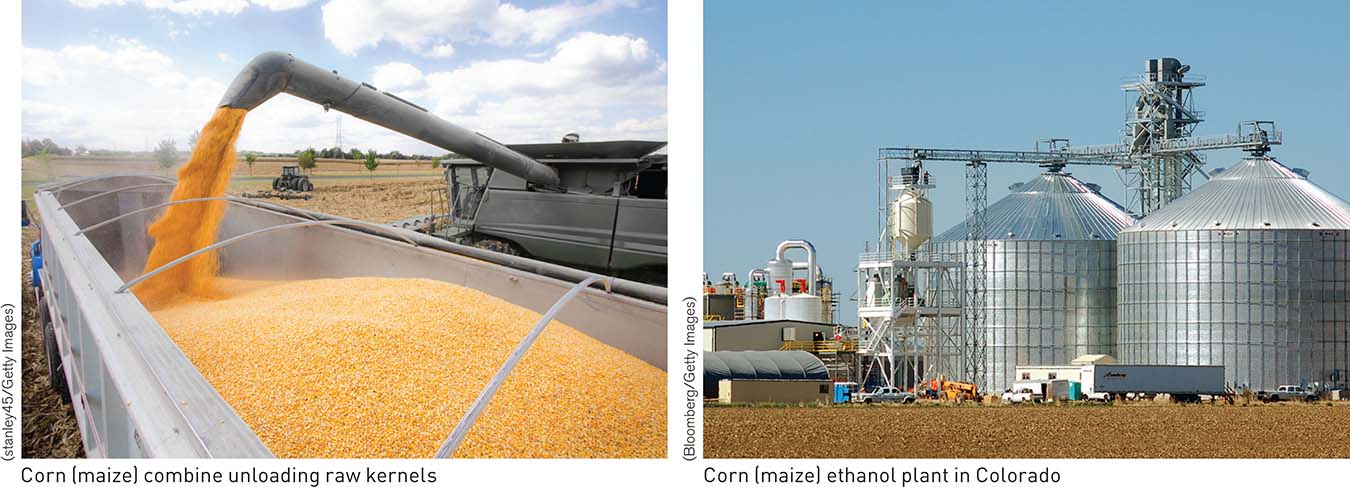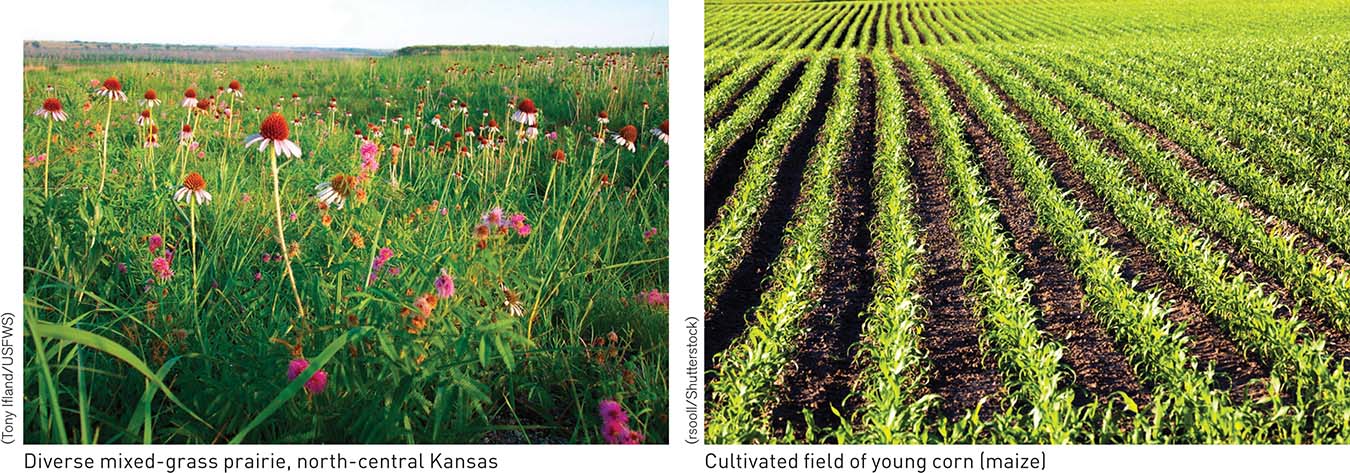10.7 Biofuel development can reduce food supplies and harm the environment

Why is it perhaps not surprising that building large reservoirs will often displace human communities?
In 2008 worldwide food prices began to skyrocket, leading to mass protests and outbreaks of famine in developing countries. One catalyst for this crisis was the boom in biofuels, which led to over 30% of the U.S. corn crop being diverted to ethanol production. When corn is transformed into biofuel, it can deprive the human population of a food source (Figure 10.35). One United Nations official concerned with global food distribution called the situation a “crime against humanity.” Nevertheless, the production of ethanol from corn continued to increase, and by 2011, the share of the U.S. corn crop going into ethanol production rose to 40%. Such growth is fueled in the United States and elsewhere by governmental programs providing subsidies to farmers growing crops for ethanol production.

316

How do we decide between the need for liquid fuels and the need for food?
Expanding production of corn and other biofuel crops around the world has the potential to cause environmental harm by increasing soil erosion, nutrient depletion of soils, nitrogen and phosphorus pollution of surface and groundwater, as well as herbicide and insecticide pollution. It also has the potential to reduce biodiversity, as lands set aside for conservation are converted to intense agriculture (Figure 10.36).

In Southeast Asia, plantations of palm oil, which is used for food and fuel, represent the number-
In Brazil, large tracts of forest have been cleared for production of soybeans, much of which is used for biodiesel production. Recent analyses have also shown that biofuels indirectly lead to rain forest destruction. As old pastures are converted to biofuel production, ranchers end up clearing new forest for grazing lands.
Think About It
What are the benefits and costs of ethanol biofuels made from corn?
How should the costs and benefits of biofuel development be weighed and prioritized?
10.4–10.7 Issues: Summary
317
Developed carelessly, renewable energy can cause many environmental problems. Concentrating solar power plants, for instance, are located in hot, arid regions and may require as much or more water for cooling than do conventional power plants. Developing solar and wind facilities and expanding the electric grid can fragment and destroy wildlife habitats, such as that of the desert tortoise in the southwestern United States. Wind turbines are a significant source of bird and bat mortality.
Hydroelectric dams have impacts on downstream ecosystems, biodiversity, and migratory fish. Often, large dams displace people, which can cause social and economic disruption. Production of fuels from biomass may reduce human food supplies, increase soil erosion, deplete soil nutrients, and pollute surface and groundwater. Biofuel development also threatens biodiversity, particularly in tropical regions such as Southeast Asia and Brazil, where expansion of biofuel production has resulted in deforestation.